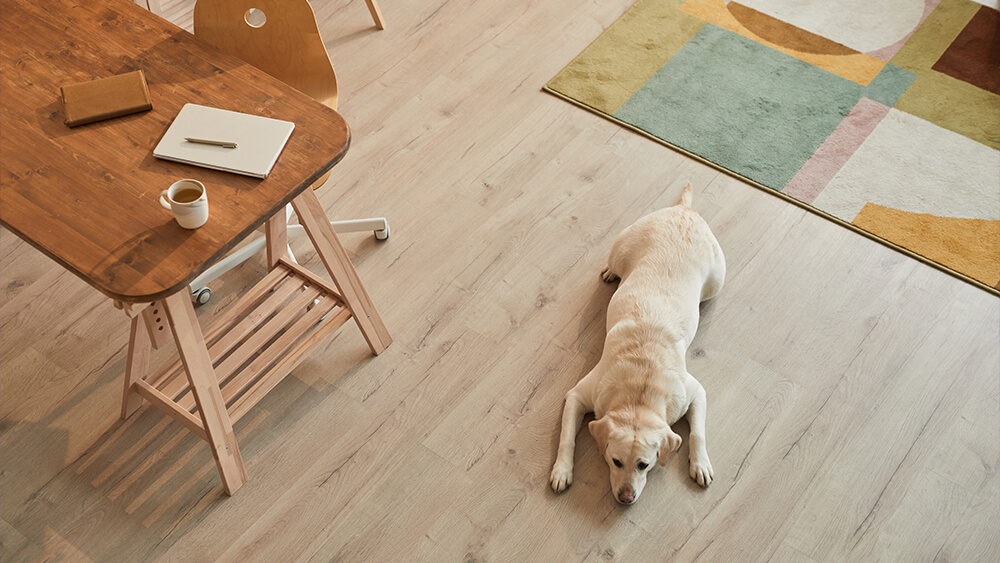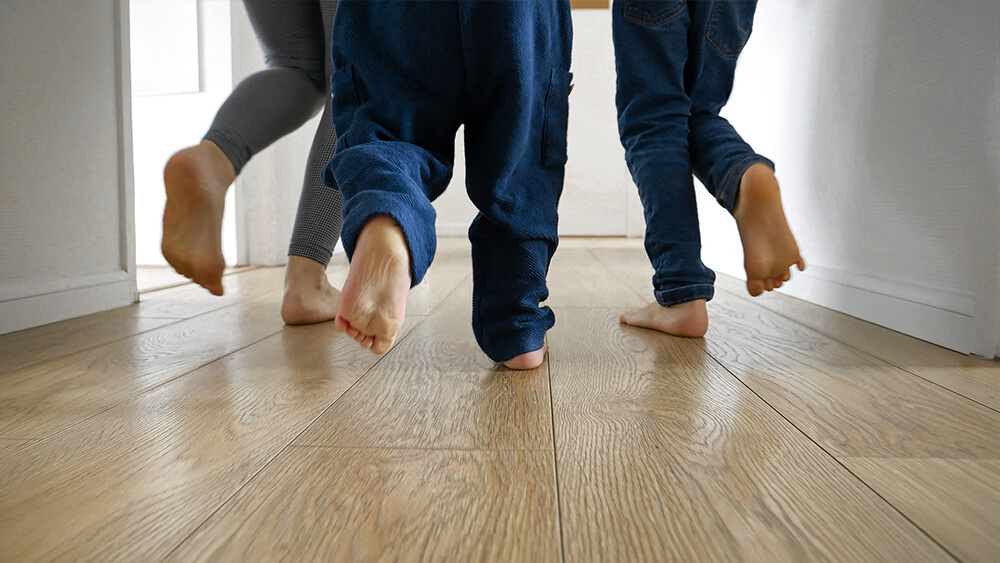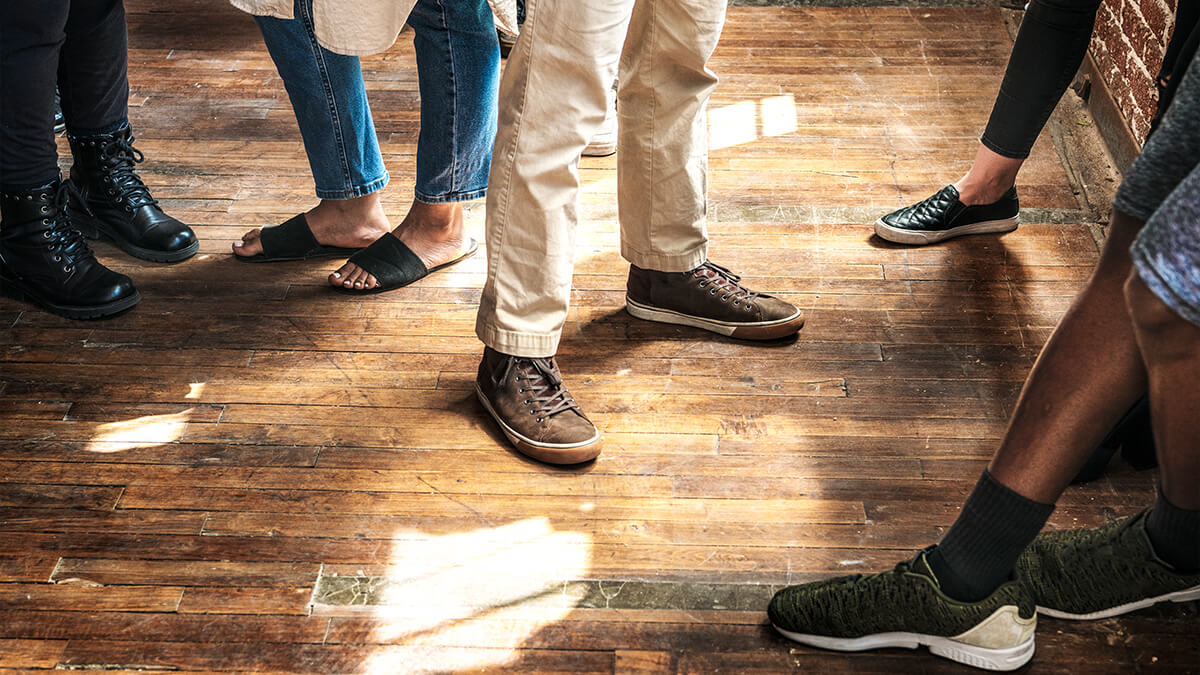In high-traffic areas, such as a crowded office, flooring must be durable and efficient. If you are considering your flooring options such as laminate flooring for a bustling company or a crowded place, you need a solution that can take a lot of foot activity. This is where laminate flooring helps.
Key considerations for laminate flooring durability
Whether you have kids and dogs or a bustling company, you need a flooring solution that can take a lot of foot activity. This is where laminate flooring helps. Consider the following list before deciding on your flooring plan:
- Wear layer: The thickness of the layer prevents spots, scratches, and fading, thereby reducing the product’s lifespan.
- AC rating: Shows how durable something is; AC1–AC5 means more durable. We recommend AC3 for areas with a high population density.
- Core material: This is usually a high-density fiberboard (HDF), which stabilizes and hardens laminate boards.
- Texture of the surface: Deeply etched or scratched surfaces endure longer than smooth ones.
- Waterproof: It lasts longer and is better than vinyl or tile, so it’s great for places with a lot of foot traffic.
- Impact resistance: For places with a lot of foot traffic, choose laminate flooring that is immune to impact.
- Warranty: Longer warranties show that the maker believes the product will last.

Over view of a dog laying on laminated floor at home
Key considerations for laminate flooring performance
Several important considerations come into play when determining how well laminate flooring performs in heavily populated locations. To find out how the flooring performs in general and how well it handles high foot traffic, it’s important to understand and assess these elements. Listed below are a few key considerations:
- Scratch Resistance: High-traffic areas need laminate flooring with a durable wear layer and a textured or embossed surface.
- Stain resistance: Laminate flooring with a protective covering resists stains and is simple to maintain.
- Fade resistance: UV protection in the wear layer prevents fading and preserves the look of the flooring.
- Dimensional stability: Laminate flooring should be dimensionally stable to tolerate humidity and temperature changes.
- Sound absorption: Sound-absorbing laminate flooring makes houses quieter. Think about choosing laminate flooring with an underlayment or a separate one.
- Slide resistance: High-traffic areas need laminate flooring with nonslip textures or coatings.
- Easy-to-clean: High-traffic areas benefit from laminate flooring with a protective covering.

A family running on the laminated floor
What to avoid when using laminate flooring in high-traffic areas
When using laminate flooring in crowded areas, avoid these things:
- Excessive moisture exposure: Laminate flooring is not waterproof, so prolonged wet contact might harm it. Do not put it in wet or spilly locations.
- Not taking precautions: Use doormats, chair cushions, and quick spill clean-up to prevent scratches, stains, or warping. Do not use harsh chemicals, rough cleaners, or too much water.
- Avoiding maintenance: Regular maintenance is necessary to keep the surface of laminate flooring in good condition. If you don’t want to damage the planks, use furniture lifts or raise the furniture before moving.
- High heels hit: Wearing high heels can damage or dent hardwood floors, so use heel caps to spread the weight.
- Humidity: To keep laminate flooring from bowing, warping, or having gaps, keep it out of direct sunlight and direct heat or wetness sources.
💡Our tips for removing stains, scratches, and dents from laminate flooring can be also helpful for you.
Conclusion
Laminate flooring is a practical and reliable option for heavy-foot traffic areas, provided it is installed and maintained properly. It can withstand scratches, stains, fades, noises, slips, and upkeep. Following installation instructions and care tips ensures long-lasting durability.

